

| HST Phase II Proposal Instructions for Cycle 12 (RPS2) | |||
|
|
Tables and Figures
Table 7.1: Supported Formats for Visit Level Special Requirements

Hint: To go directly to information for a particular Special Requirement, go to the tables that follow below, and click on any entry.
Table 7.2: Supported Formats for Exposure Level Special Requirements
Table 7.3: Accuracies of Guiding Modes
Figure 7.1 ORIENTation computation for WFPC2
Figure 7.2 ORIENTation computation for STIS.
Figure 7.3 ORIENTation computation for FGS1R, in TRANS mode.
Table 7.4: Instrument Orientations with respect to U3-Direction
Table 7.5: Approximate Separation and Orientations between Instrument Detectors
7.1 Introduction to Special Requirements:
Syntax and RulesSpecial requirements provide flexibility in specifying the scheduling requirements of observations. Many Special Requirements, directly or indirectly, restrict the times when observations can be scheduled. These should be used to provide the schedulers at STScI with enough constraints to ensure that the observations are properly scheduled. Special Requirements should not be used unless necessary to accomplish the scientific objectives of the program.
The Special Requirements are summarized in Table 7.1: Supported Formats for Visit Level Special Requirements and Table 7.2: Supported Formats for Exposure Level Special Requirements, and a detailed description of each requirement is provided in the following subsections.
The following conventions and rules should be observed when reading the descriptions of the Special Requirements and when entering them.
Table 7.1: Supported Formats for Visit Level Special Requirements
- It is permissible to use only the portions of the keywords that are shown in upper-case letters in Table 7.1 and Table 7.2 and in the discussion below. The portions in lower-case letters are included for clarity only. For example, SEQ could be entered rather than SEQUENTIAL.
- Items inside angular brackets (< >) in the Special Requirement descriptions are to be replaced with the relevant information. All indicated items must be provided, except for items inside square brackets ([ ]), which are optional. For example, the general specification SEQuential <visit-list> [WITHIN <time>] means that SEQ 5-7 WITHIN 10D and SEQ 5-7 are acceptable, but SEQ WITHIN 10D is not.
- Exposures must be referred to by their exposure numbers. <exposure> must be replaced by the number of a single exposure. <exposure-list> must be replaced by one of the following: A single exposure number; several exposure numbers separated by commas or spaces; or a range of exposure numbers separated by a hyphen. The following are all valid examples for SEQuence <exposure-list> NON-INTerruptible:
SEQ 2-5 NON-INT, SEQ 4, 5, 11 NON-INT, SEQ 6-7 14-15 NON-INT. Hyphens may be used in exposure lists to indicate a range (e.g., SEQ 15-17 NON-INT).- A <date> specification in a Special Requirement must either be a geocentric date expressed in Universal Time (UT) or a heliocentric Julian Date. A UT date must be entered in the form DD-MMM-YYYY:hh:mm:ss.s, where MMM represents the first three letters of the month name. For example, 14-DEC-2001:17:05:41.1 refers to 14 December 2001, geocentric UT 17H05M41.1S. Only the necessary precision need be employed (e.g., 14-DEC-2001 might be adequate), but four-digit years are now mandatory. Julian Dates must be entered in the form JDnnnnnnn.nnn (e.g., JD2444123.4). Only the required precision need be provided. All Julian Dates will be interpreted as heliocentric.
- All <time> specifications must be expressed in one of the following: days (D), orbits (ORBITS), hours (H), minutes (M), or seconds (S). All other time units (such as weeks, months or years), as well as combined time units (such as 14D 15H), are not permitted.
- Multiple Special Requirements entered on the same line may be separated by a semi-colon (;) for the sake of readability, but this is now optional. Multiple Special Requirements separated by different lines need no further delimiting. Under no circumstances should a comma be used to separate Special Requirements.
- A visit-level Special Requirement (Visit_Requirements) applies to ALL the exposures within that visit.
- An exposure-level Special Requirement (Special_Requirements) applies ONLY to that exposure and any other referenced exposures within the same visit. For example, SEQ 4-6 NON-INT on exposure 1 means that exposures 4-6 MUST be in the same visit as the exposure 1.
Guiding Requirements PCS MODE Fine PCS MODE F PCS MODE Gyro PCS MODE G GUIDing TOLerance <angle> GUID TOL 0.020" DROP TO GYRO IF NECESSARY [NO REACQuisition] DROP TO GYRO IF NECESSARY Target Orientation Requirements ORIENTation <angle1> TO <angle2> ORIENT 18D TO 22D ORIENTation <angle1> TO <angle2> FROM <visit> ORIENT 18D TO 22D FROM 5 SAME ORIENTation AS <visit> SAME ORIENT AS 5 Special Observation Requirements CVZ CVZ SCHEDulability <percentage> SCHED 50% NOTRACK NOTRACK Timing Requirements AFTER <date> AFTER 12-JUL-2001:12:06 AFTER <visit> [BY <time1> [TO <time2>]] AFTER 6 BY 7D TO 9D BEFORE <date> BEFORE 14-SEP-1999 BETWEEN <date1> AND <date2> BETWEEN 21-DEC-1999 AND 31-DEC-1999 GROUP <visit-list> WITHIN <time> GROUP 5-10 WITHIN 60D PERIOD <time> AND ZERO-PHASE <date> PERIOD 1.23H AND ZERO-PHASE JD2444000 SEQuence <visit-list> WITHIN <time> SEQ 5-7 WITHIN 24H VISIBILITY INTERVAL CORON VISIBILITY INTERVAL CORON Conditional Requirements ON HOLD [FOR <visit-list>] ON HOLD FOR 15
Table 7.2: Supported Formats for Exposure Level Special Requirements
Target Acquisition Requirements INTeractive ACQuisition (obsolete) No longer available; see text. Target Position Requirements POSition TARGet <X-value>, <Y-value> POS TARG +6.3,-8.1 SAME POSition AS <exposure> SAME POS AS 6 PATTERN see Chapter 8: "Pointings and Patterns" Special Observation Requirements PARallel <parallel-exp-list> WITH <primary-exp-list> PAR 4-6 WITH 1-3 SAA CONTOUR <model number>: (WFPC2 only) SAA CONTOUR 02 Special Communications Requirements RT ANALYSIS RT ANALYSIS REQuires UPLINK REQ UPLINK REQuires EPHEMeris CORRection <id> REQ EPHEM CORR OFF-13 Timing Requirements EXPAND EXPAND LOW-SKY LOW-SKY MAXimum DURation [<time or percentage>] MAX DUR 115% MINimum DURation [<time or percentage>] MIN DUR 30M PHASE <number1> TO <number2> PHASE 0.09 TO 0.11 SEQuence <exposure-list> NON-INTerruptible SEQ 2-5 NON-INT SHADOW SHADOW
7.2 Visit-level Special Requirements
The following Special Requirements are applicable at the visit level, and they will affect all the exposures within that particular visit.
7.2.1 Guiding
There are currently two tracking modes available during HST observations. One of the modes employs guide stars and the Fine Guidance Sensors: Fine Lock. Alternatively, observations can be made while the HST is stabilized with gyros. (In this scenario no guide star acquisition occurs, and the absolute error of positioning is 14 arcsec with a drift rate of about 0.0014 arcsec/sec.) The typical guiding accuracies for the two modes are listed in Table 7.3
Table 7.3: Accuracies of Guiding Modes
Guiding Mode Guiding Accuracy1 Gyro hold Drift rate 0.0014 arcsec/sec Fine lock RMS jitter 0.005 arcsec
1Excluding periods during day/night terminator crossings, where jitter can be as high as 0.035 arcsec rms over a period of 5 minutes.
All observations will be performed using Fine Lock guiding by default whenever possible. If difficulties are encountered finding guide stars, you will be contacted by STScI. If you cannot find what you feel to be an appropriate tracking mode, you are urged to contact your Program Coordinator for help resolving the issue.
PCS MODE Fine
Specifies the use of Fine Lock as the guiding mode for the exposures defined in that particular visit. This Special Requirement is the default and any use of the GUIDing TOLerance <angle> overrides this Special Requirement.
PCS MODE Gyro
Specifies the use of Gyro hold as the guiding mode for the exposures defined in that particular visit. This mode is available ONLY with the WFPC2, ACS/WFC, ACS/HRC, NICMOSand STIS/CCD SI/detector combinations. It is prohibited with other SIs because of concern that gyro drift will result in inadvertent exposure to bright objects. Note that the RMS absolute pointing error for gyro hold is 14 arcsec with a drift rate of about 0.0014 arcsec/sec. This Special Requirement overrides the default and any use of the GUIDing TOLerance <angle> Special Requirement.
GUIDing TOLerance <angle>
GUID TOL <angle> specifies a non-default guiding tolerance for the exposures contained within that particular visit. The <angle> is the allowed maximum pointing error for the observations; the units must be given (" is typical, but arcmin or degrees are acceptable). The GUIDing TOLerance should be used in situations when it is permissible for a portion of the observation to be taken while guiding on gyros. The GUID TOL Special Requirement is also used as a trigger for the guide star handoff capability. This capability is useful for fast moving targets, as well as multi-orbit observations of all moving targets. The handoff process involves using a single pair of guide stars for as long as possible. When a given exposure cannot be completed with a given pair of guide stars, guidance is transferred to gyro control. The fine guidance sensors are slewed to and acquire a new pair of guide stars before the exposure in question begins. The error in this procedure is due to the accumulated drift during gyro control, typically a few tenths of an arcsec at most. Note that this is much less than the nominal error between guide star pairs. The planning system will schedule the observations so that the expected pointing-error buildup remains below the <angle> specified. Guide star handoff will only be used if a single pair of guide stars cannot be found for the observation. If you need to use the guide star handoff capability, then set GUID TOL to at least 0.11".
Note that the difficulty in finding guide stars for these types of observations may prevent them from being scheduled. If you plan to use this Special Requirement, please contact your Program Coordinator for further details and discussions.
DROP TO GYRO IF NECESSARY [NO REACQuisition]
This Special Requirement allows the system to drop guide-star control for exposures with pointings (target/aperture positions) that are too far (more than 2 arcmin) from the first pointing in the visit to use the same guide stars. If this Special Requirement is not used, such exposures will have to be taken using a separate pair of guide stars. The NO REACQ qualifier will disable guide-star reacquisition after dropping to gyro control, even if subsequent pointings are close enough to the first pointing in the visit to allow guide-star control to be resumed. This Special Requirement has no meaning for internal observations and visits with PCS MODE Gyro. This Special Requirement is allowed ONLY with the WFPC2NICMOS, ACS/WFC, ACS/HRC, and STIS/CCD SI/detector combinations (see the above discussion of PCS MODE Gyro). DROP TO GYRO is not allowed with the ACS/SBC configuration because of concern about bright objects.
See the discussion of the GUIDing TOLerance <angle> Special Requirement concerning the pointing drift that will occur while the spacecraft is under gyro control. Due to this drift, this requirement is useful primarily for short observations (bright targets) where pointing is not critical (e.g. imaging). This capability might be used if, after spending most of an orbit obtaining spectra of a target, you want to get a quick image without having to acquire a new set of guide stars. Some uses of the WFPC-2 linear ramp filters might be more efficient if this requirement is used.
7.2.2 Target Orientation
The solar arrays of HST must be kept pointed at the Sun (to within a modest angle) in order for the spacecraft to have the electrical power it needs. As the Sun moves through the heavens over the course of a year, this requirement for the solar arrays translates into a position angle on the sky on which HST's detectors lie. Therefore an observer-imposed requirement to, say, orient a slit in a particular position angle means that observation must be done at a specific time. When a special aperture orientation is requested, this will generally be accommodated by scheduling the observation during the time interval when that orientation naturally results in the solar array being positioned nearly perpendicular to the Sun (this is called the "nominal" orientation).
In order to achieve a specific orientation and satisfy spacecraft roll constraints, an observation generally must be scheduled within a fairly narrow time interval. The placement and duration of time intervals that satisfy this constraint will depend on the ecliptic coordinates of the target. The observer must take this into consideration when specifying additional timing constraints (e.g. BETWEEN, BEFORE, AFTER). For a discussion of nominal roll and how it changes with time based on ecliptic latitude, see ORIENTation <angle1> TO <angle2> FROM <visit> below.
Observers should specify orientations by specifying the position angle of the orientation reference vector U3, as listed in Table 7.4: Instrument Orientations with respect to U3-Direction. To avoid confusion with the spacecraft V2, V3 axes, we define U2, U3 axes which lie in the HST focal plane as projected onto the sky. The U2- and U3-directions are defined by the "nominal" Optical Telescope Assembly (OTA) axis, which is near the center of the WFPC2 CCDs, and the nominal centers of the projected FGS1R, FGS3 and FGS2R FOVs, respectively.
To specify a special orientation of an aperture, slit, aperture pair, etc., the observer should algebraically add two angles:
- The position angle on the sky of the feature to be aligned.
- The "offset angle," which is the angle from an aperture axis to the +U3 axis.
This aperture axis may be the X or Y axis of an SI, or one of the aperture-related features given in Table 7.4. The "offset angle" could also be the angle of the line separating two instruments (Table 7.5) if that is the relevant orientation. The axes for the SIs are given in the SI-specific chapters in Part B.
The algebraic sum of the aperture orientation and the offset angle is the U3 orientation, which should be specified in the ORIENTation <angle1> TO <angle2> and ORIENTation <angle1> TO <angle2> FROM <visit> Special Requirements described below. All angles are measured North through East, or counterclockwise when referring to the figures in this section. If there is any uncertainty in specifying an orientation, please document the calculations in the Visit_Comments and contact your Program Coordinator for clarification.
If a visit contains multiple targets requiring different guide stars, the spacecraft orientation will normally be reset to the "nominal" orientation each time a new set of guide stars is acquired. However, if the visit has an ORIENTation <angle1> TO <angle2> FROM <visit>, SAME ORIENTation AS <visit>, or ORIENTation <angle1> TO <angle2> FROM <visit> Special Requirement, the spacecraft orientation will not change during the visit, even if multiple sets of guide stars are needed.
Examples of Orientation Angle Computations
We show three examples of how to compute an orientation angle, one for each of the three Cycle 12 instruments.
ORIENTation <angle1> TO <angle2>
Specifies that a specific absolute roll angle or orientation of the spacecraft is required for the exposures within the current visit. <angle1> and <angle2> denote a region within which the position of the U3 axis on the sky (measured North through East) must fall at the time of the observation; both limits must be between 0 (0D) and 360 degrees (360D). If necessary, it is possible for <angle1> and <angle2> to be equal, but the size of the region between the two limits should be made as large as possible to make scheduling easier. Note that in most instances the angles can have a 180 degree offset and still work. If this is desired (for greater scheduling flexibility), please specify the additional possible angles.
Figure 7.1: ORIENTation computation for WFPC2
Note also that this Special Requirement can now list several acceptable angle ranges:
ORIENTation <angle1> TO <angle2>
ORIENTation <angle3> TO <angle4>
ORIENTation <angle5> TO <angle6>
ORIENTation <angle7> TO <angle8> . . .
Both angles are measured in a counterclockwise direction, so if the orientation region crosses zero (celestial North), <angle1> would be greater than <angle2>. Otherwise, <angle1> should be less than <angle2>. It is also possible for the orientation region to be larger than 180 degrees. You are encouraged to enter both the aperture angle(s) and the offset angle used to calculate these angles in the Visit_Comments.
Note: If the visit uses multiple targets, the direction of North from the first target will be used. The spacecraft will not roll between targets, so that the U3 position angle at the new target may be slightly different from that of the first target.
It is sometimes desirable for a new observation to be taken at the same orientation as an existing archival image, using the "PA_V3" field from the header in the archive. For the WFPC2, it is necessary to add or subtract 180 degrees from the "PA_V3" angle before using it in the ORIENTation Special Requirement
Figure 7.2: ORIENTation computation for STIS.
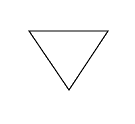
ORIENTation Special Requirements are a limited resource and should be used only when necessary.
.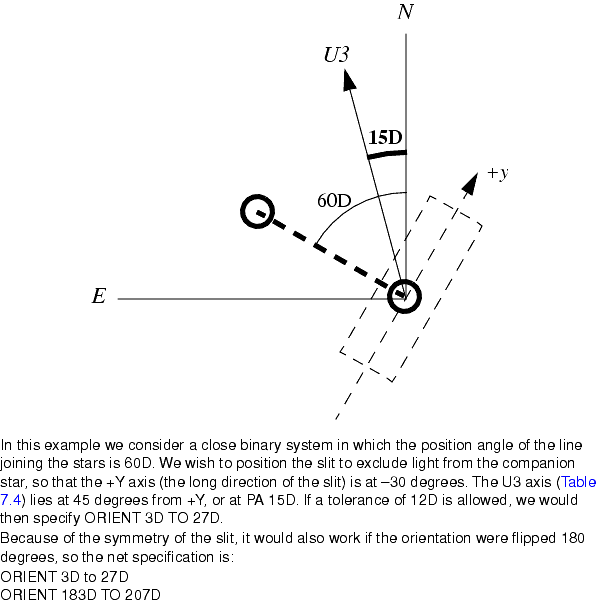
ORIENTation <angle1> TO <angle2> FROM <visit>
Specifies that a roll angle or orientation of the spacecraft, relative to another visit's spacecraft orientation, is required for the exposures within the current visit. <angle1> and <angle2> denote a region of permitted orientation of the current visit relative to <visit>. <angle1> and <angle2> must be between -180 degrees (-180D) and +180 degrees (180D). If necessary, it is possible for <angle1> and <angle2> to be equal, but the size of the region between the two limits should be made as large as possible to make scheduling easier.
Both angles are measured in a counterclockwise direction, so if the orientation region crosses a point 180 degrees from <visit>, <angle1> should be positive and <angle2> negative. Otherwise, <angle1> should be less than <angle2>. It is possible for the orientation region to be larger than 180 degrees.
Figure 7.3: ORIENTation computation for FGS1R, in TRANS mode.
Orientation constraints translate into timing constraints. Generally, if the spacecraft is unable to roll far enough off-nominal to satisfy the required difference in orientation between the two visits, they will be forced apart in time in order to schedule both at near nominal roll. "Nominal roll" is the orientation determined by the necessity of keeping the solar panels perpendicular to the Sun. Targets near the ecliptic have two values of nominal roll through the year 180 degrees apart. Near the ecliptic pole, nominal roll varies by about a degree per day.
In general, the off-nominal roll is limited to less than +/- 30 degrees except when the target is within two degrees of opposition (i.e., exactly opposite the Sun in the sky as viewed from the Earth). Observations scheduled with solar elongations between 90 degrees and 178 degrees can be done at up to 23 to 30 degrees off nominal, depending on the exact elongation. For observations scheduled when the target is within 90 degrees of the Sun, the off-nominal roll is limited to 5 degrees. The legal syntax for <angle1> and <angle2> allows angles between -180 degrees (-180D) and +180 degrees (180D). Please contact your Program Coordinator for details if necessary.
This Special Requirement is a limited resource and should be used only when necessary. To specify that the current visit be scheduled at the same orientation as another visit, use the SAME ORIENTation AS <visit> Special Requirement.

Note that only one "ORIENT ... FROM" may be specified for a visit.
Table 7.4: Instrument Orientations with respect to U3-Direction FGS (see Figure 11.1) +X axis for FGS1 180° +X axis for FGS2 90° +X axis for FGS3 0° STIS (see Figure 10.1 STIS coordinate system)) All configurations: Nominal, +/- 4D Long Slit Spatial/+AXIS2/+Y 45D Dispersion/+AXIS1/+X 135D Toward increasing occultation: WEDGEA 45D WEDGEB 135D WFPC2
(see Figure 9.1)WFC +X axis 45D WF2 bloom direction 45D, 225D WF3 bloom direction 135D, 315D WF4 bloom direction 45D, 225D PC1 +X axis 45D PC1 bloom direction 135D, 315D Linear Ramp Filters, Nominal 135D, 315D Coincident with CCD Polarizers Relative polarization angles POL0-WF2 45D POL45-WF3 0D POL90-WF4 315D POL135-PC1 270D POL-33-WF2/WF3 303D ACS (see Figure 12.1 ACS Coordinate system WFC1 + Y axis 2D WFC2 + Y axis 2D HRC + Y axis 180D SBC + Y axis 180D WFCENTER + Y axis 2D WFC + Y axis 2D NICMOS (see Figure 13.1 and Figure 13.2) NIC1 +Y axis 225D Nominal, +/- 4D NIC2 +Y axis 225D NIC3 +Y axis 225D Line joining NIC3 and NIC1 225D Line joining NIC3 and NIC2 225D NIC3 Grism Dispersion (toward increasing wavelength) 135D
1The Offset Angle is the angle from the axis defined in the Item column to the +U3 axis in the counterclockwise (or +U3 through +U2) direction. To compute the angle needed in the ORIENT Special Requirement, add this Offset Angle in column 3 to the Sky Position Angle (measured North through East). These angles are calculated from current alignment calibrations and reflect uncertainties of +/- 3 degrees, except where greater uncertainties are indicated in the table comments.
Table 7.5: Approximate Separation and Orientations between Instrument Detectors ACS WFALL-FIX to WFC 345 314.3D WFALL-FIX to HRC/SBC 510 337.9D STIS to WFC 663 315.7D STIS to HRC/SBC 817 330.0D FGS WFALL-FIX to FGS1 721 +/ 3 88.6D WFALL-FIX to FGS2 737 +/ 3 89.8D WFALL-FIX to FGS3 728 +/ 3 270.1D STIS WFALL-FIX to STIS 3184 317D WFPC2 WFALL-FIX to WF4-FIX 55 +/- 1 75D +/- 0.3D WFALL-FIX to WF3-FIX 39 +/- 1 180D +/- 0.3D WFALL-FIX to WF2-FIX 55 +/- 1 285D +/- 0.3D WFALL-FIX to PC1-FIX 39 +/- 1 0D +/- 0.3D WFALL-FIX to APEX 14 +/- 1 0D +/- 0.3D APEX to WF4 53 +/- 1 90D +/- 0.3D APEX to WF3 53 +/- 1 180D +/- 0.3D APEX to WF2 53 +/- 1 270D +/- 0.3D APEX to PC1 25 +/- 1 0D +/- 0.3D NICMOS WFALL-FIX to NIC 420 +/- 15 227D +/- 3D WFALL-FIX to NIC2 453 +/- 15 227D +/- 3D WFALL-FIX to NIC3 372 +/- 15 227D +/- 3D
1WFALL-FIX is defined as the point 10x10 arcsec from the WFPC2 pyramid apex in the WFPC2 X-Y coordinate frame (see Figure 9.1 WFPC2 Aperture Coordinate System). APEX refers to the WFPC2 pyramid apex. This apex is close to the OTA optical axis. The U2-U3 coordinate frame is not centered at the OTA optical axis.
2The vector Separations are calculated from current estimates of the locations of the WFPC2, FGS, and STIS, and NICMOS apertures. These values can change with time.
3The Offset Angle is defined as the angle from the line connecting the two Science Instruments to the +U3 axis in the counterclockwise direction. These numbers are calculated from current estimates and reflect uncertainties of +/- 1 degree, except where greater uncertainties are indicated in the table.
4This value is representative of the STIS apertures. For details on specific STIS apertures, see the Pointing and Aperture web page: http://www.stsci.edu/instruments/stis
WARNING: For any detailed orientation requirements, please describe your requirements clearly in the proposal text and give angles and offsets. Please feel free to contact your Program Coordinator for assistance in preparing your orientations. The above tabulated values are meant to be representative, and because of instrument-specific details the value you need may differ. Please refer to the Pointing and Aperture web page for current values:
http://www.stsci.edu/instruments/stis
SAME ORIENTation AS <visit>
Sometimes any orientation (or any orientation within the range of the ORIENT Special Requirement) is acceptable the first time an object is observed, but must then be the same for subsequent observations of that target. This Special Requirement requests that the exposures in the current visit be made at the same telescope roll angle as the observations specified in <visit>. If timing Special Requirements are also used, then an incompatibility may result or the observations may be difficult to schedule.
7.2.3 Special Observation Requirements
CVZ
Requests that a visit be scheduled within the Continuous Viewing Zone. When this requirement is specified, observers are allowed the entire 96-minute orbit in which to schedule their observations, instead of restricting them to a visibility interval. Only observers with proposals approved by the TAC for CVZ-usage should use this Special Requirement.
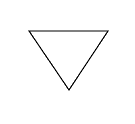
Caution: CVZ visits are limited to a few narrow scheduling opportunities during a Cycle. A detailed definition of the CVZ for Cycle 12 is given in the Call for Proposals.
Note: The CVZ Special Requirement does not necessarily enforce scheduling in an uninterrupted manner. Observations could be scheduled in SAA impacted or earth occulted orbits if that would benefit the overall efficiency of the telescope. If it is required that all (or a subset) of the exposures be done without interruption, the exposure level Special Requirement SEQuence <exposure-list> NON-INTerruptible should be used.
SCHEDulability <percentage>
This Special Requirement allows the observer to adjust the amount of target visibility allowed in each orbit. The visibility at a given pointing varies throughout the year with the 56-day precessional cycle of the HST orbit. This variation is small at zero declination (about 4 minutes between best case and worst case) but increases sharply as the Continuous Viewing Zone is approached. There is a trade-off between visibility and schedulability: visits with longer visibilities allow more science to be packed into each orbit, but are harder to schedule because the long visibility may only be attainable for a few short intervals during the year. Visits with shorter visibilities are less efficient in terms of how much can be done in each orbit, but are easier to schedule.
<Percentage> specifies the percent of HST orbits in which the visit should be schedulable. The higher the percentage, the shorter the visibility. For example, SCHED 40% would allow only enough visibility in each orbit for the visit to be schedulable in the best 40% of HST orbits. SCHED 100% would allow the least amount of time per orbit, but would ensure that the visit would "fit" in every available HST orbit. Schedulability values are only defined at 10% intervals, so percentages will be rounded to the nearest multiple of 10%. If this Special Requirement is not supplied, visits will default to 30% schedulability. <Percentage> values below 30% are not allowed.
The SCHED Special Requirement may be necessary when an ORIENTation <angle1> TO <angle2> or BETWEEN <date1> AND <date2>) visit-level Special Requirement or a PHASE <number1> TO <number2> exposure-level Special Requirement is specified with a very small tolerance, restricting the visit to only a few days during the cycle. In this case <percentage> should be set to a high enough number to ensure that the visit can schedule in orbits within its time window.
NOTRACK
In certain cases a program will observe a moving target, but without tracking it. For example, a fast-moving comet might be observed by first executing a guide star acquisition, to remove pointing uncertainty, followed by an observation on gyros to acquire the comet data. This should be done without tracking both to save time and to avoid unnecessary use of spacecraft hardware.
The default is to track a moving target, but tracking can be turned off by specifying NOTRACK for each exposure as appropriate. NOTRACK has no effect on an exposure unless it is for a moving target.
7.2.4 Timing Requirements
For examples of formats of times, see 7.1 "Introduction to Special Requirements: Syntax and Rules", and Table 7.1: Supported Formats for Visit Level Special Requirements.
AFTER <date>
Specifies that the visit must start after the date given by <date>. The capability to designate a specific exposure within a visit to start after a certain time is not supported by this Special Requirement; that case is intended to be handled by adjusting timing within the visit.
AFTER <visit> [BY <time1> [TO <time2>]]
Specifies that the visit must start after the indicated <visit>. The BY option allows specification of the time interval (and its allowable range) that must elapse between the start of the referenced visit and the start of the current visit. For example, AFTER 6 BY 7H TO 9H requests that the current visit start no earlier than 7 hours and no later than 9 hours after the start of visit 6. If the TO <time2> is omitted, <time1> will be considered a lower limit (e.g., AFTER 20 BY 3H indicates that 3 hours or more are required between the start of visit number 20 and the start of the current visit). The capability to designate a specific exposure within a visit to start after a certain time is not supported by this Special Requirement; that case is intended to be handled by adjusting timing within the visit.
Note: If the difference between <time1> and <time2> is too small, the visit may be impossible to schedule. A difference of at least 90 minutes (about 1 orbit) is recommended. Also note that <time1> must be as long as the anticipated duration of the referenced visit.
Specifies that the current visit must start before the <date> given. The capability to designate a specific exposure within a visit to start before a certain time is not supported by this Special Requirement; that case is intended to be handled by adjusting timing within the visit.
BETWEEN <date1> AND <date2>
Specifies that the current visit must start between <date1> and <date2>. For example, BETWEEN 14-SEP-1999 AND 21-SEP-1999 indicates that the visit must be started after 14 September 1999 and before 21 September 1999. The capability to designate a specific exposure within a visit to start at a certain time is not supported by this Special Requirement; that case is intended to be handled by adjusting timing within the visit.
Multiple BETWEEN Special Requirements may be specified on a visit. The visit will be allowed to execute during any of the time intervals specified. For example, the combination of BETWEEN 14-SEP-1999 AND 21-SEP-1999 and BETWEEN 10-OCT-1999 AND 1-NOV-1999 means that the visit must be started either between 14 September 1999 and 21 September 1999, or between 10 October 1999 and 1 November 1999. Multiple BETWEEN intervals on the same visit may not overlap: all the other intervals must either end earlier than <date1> or start later than <date2>.
GROUP <visit-list> WITHIN <time>
Specifies that visits numbered in the <visit-list> must all start within the <time> given. If the interval given is shorter than the least interval possible, the visits will be scheduled as close together as possible. For example, GROUP 7-10 WITHIN 12H requests that visits 7 through 10 all start execution within a 12-hour interval.
Note that GROUP WITHIN is only a timing Special Requirement, and it implies nothing about relative ordering. GROUP 7-10 WITHIN 12H could possibly execute in the order 10, 7, 9, 8, for example.
PERIOD <time> AND ZERO-PHASE <date>
Supplies the period and zero-phase for observations to be made at a specific phase of a periodically variable target. <time> is the period in days, hours, minutes or seconds, and <date> is the date of the zero-phase with respect to the Sun (i.e, HJD, not a calendar date). Note that, while this requirement is at the visit level, the actual PHASE Special Requirement is on the exposure level.
If a target has multiple periods which must be satisfied simultaneously, the PERIOD AND ZERO-PHASE Special Requirement should refer to the shorter of the two periods and the longer period can be specified using multiple BETWEEN Special Requirements that cover the next year and a half. Be sure to discuss this with your Program Coordinator. (Example: The target is a X-ray pulsar. The observation needs to occur in a particular phase of the 35-hour binary period as well as a particular phase of the 2-month on/off period. Use the PERIOD AND ZERO-PHASE Special Requirement for the 35-hour period and then specify the 2-month period with multiple BETWEENs.)
SEQuence <visit-list> WITHIN <time>
Specifies that visits numbered in the <visit-list> must start within the <time> given, and must be ordered according to their visit number. If the interval given is shorter than the least interval possible, the visits will be scheduled as close together as possible. For example, SEQ 7-10 WITHIN 10H means that visit 10 must begin execution within 10 hours of the start time of visit 7, with visits 8 and 9 executing between. SEQ does not change the order of visits.
Note that visits are executed in order of their numbers, so SEQ 2, 1, 4 WITHIN and SEQ 1, 2, 4 WITHIN do the same thing.
VISIBILITY INTERVAL CORON
This Special Requirement will override the visibility interval normally computed for the visit. No pads will be added, nor will any adjustment be performed based on the target declination. This should not be used in conjunction with the CVZ or SCHEDulability <percentage> Special Requirement. This Special Requirement may only be used with NICMOS, ACS or STIS coronagraphic observations.
7.2.5 Conditional Requirements
ON HOLD [FOR <visit-list>]
Specifies that the current visit should not be executed without further guidance from the observer (such as with a Target of Opportunity program, for example). When the FOR <visit-list> is specified, the current visit is linked to follow all the visits in <visit-list> by at least sixty days. This will allow these visits to execute early enough in the Cycle to provide needed data. This Special Requirement should be used for early acquisitions: the acquisition image is taken in the visit in <visit-list>, and the ON HOLD visit will be modified later based on the acquisition data.
7.3 Exposure-level Special Requirements
The following Special Requirements apply to individual exposures within a visit. All instances of <exposure-list> or <exposure> refer only to exposures in the same visit as the exposure carrying the requirement.
7.3.1 Target Acquisition
Separate target acquisition exposures must be specified at the beginning of most visits, depending on the target and the science instrument used. Target acquisition exposures are used to remove coordinate uncertainties and to identify targets. Once a target acquisition has been performed, HST can move the target from aperture to aperture or move the aperture around the target (with slew accuracies of about 10 milliarcseconds) as long as the same guide stars can be used. Onboard acquisitions are automatically identified by the software. Acquisition exposures must still be specified, but no Special Requirement is needed or appropriate.
Acquisition of a target using an offset target requires that both be defined in the Target List(s). The first exposure will be an onboard or interactive acquisition of a target from which the offset will be made. This target must be designated as an offset acquisition target by appending -OFFSET to the end of the target name (see Table 3.1: Designations of Special Targets). The appropriate offsets will automatically be made from this position to slew to the target of interest.
INTeractive ACQuisition (obsolete)
Interactive acquisitions may no longer be performed with HST. However, the same results can be achieved in other ways, and you should consult your Program Coordinator for more information.
7.3.2 Target Position
POSition TARGet <X-value>, <Y-value>
Specifies a non-default placement of the target, relative to the aperture fiducial point in the instrument field of view, for the current exposure, which must be on an external target. The X and Y positions are implicitly assumed to be in units of arcseconds (i.e. do not enter "arcsec" after each value). The X-Y coordinate system and the default positioning for each scientific instrument are defined in Part B of these Instructions. An aperture's fiducial point is ordinarily close to the geometric center of that aperture. Details may be found in the Instrument Handbooks. Note that the fiducial point and geometric centers are significantly different for the WFPC2 RAMP filters in particular.
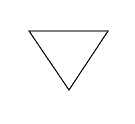
Note that a POS TARG is a motion relative to the original pointing of the target, and so they are not cumulative.
Note: Changing the pointing in this way can cause overheads to be repeated at each POS TARG pointing in the case of WFPC2. If a large number of pointings need to be obtained within one visibility period, it may be more efficient to use a pattern designed for this purpose; see Chapter 8: "Pointings and Patterns".
SAME POSition AS <exposure>
SAME POSition AS <exposure>: Requests that the current exposure be done at the same position on the sky and with the same telescope roll as <exposure>. Note that <exposure> must be in the same visit as the current exposure. This requirement is implicit for exposures within a visit with the same aperture, target, and POS TARG combination.
This requirement is used in many astrometric observations, so that the telescope doesn't try to center successive targets in the astrometer pickle before observing it.
For other instruments, SAME POS AS should be used sparingly and with caution. For example, SAME POS AS 1 will cause the spacecraft to return to the pointing of exposure 1. Thus if the current exposure has a different (non concentric) aperture from 1 and specifies SAME POS AS 1, the target will be placed in the aperture used by exposure 1, not the aperture currently requested. Further, specifying SAME POS AS an onboard acquisition exposure will undo the offsets determined in the acquisition process.
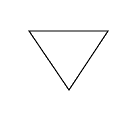
SAME POS AS should not be used with WFPC2 exposures which use different partially-rotated filters.
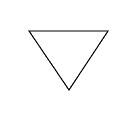
Do not use SAME POS AS with dithering patterns (Chapter 8: Pointings and Patterns) because it will negate them. SAME POS AS means exactly the same position as another exposure.
7.3.3 Special Observation Requirements
PARallel <parallel-exp-list> WITH <primary-exp-list>
Specifies that the exposures in <parallel-exp-list> will execute in parallel with a sequence of exposures in <primary-exp-list>. Both <primary-exp-list> and <parallel-exp-list> must be replaced by either a single exposure number, or a range of exposure numbers separated by a hyphen. See 6.3 "Coordinated Parallels" for more details.
SAA CONTOUR <model number>: (WFPC2 only)
This specifies the contour of the South Atlantic Anomaly (SAA) to be used for scheduling this exposure. If this parameter is not provided, a default SAA contour appropriate to the SI will be selected. Observations that can tolerate higher radiation levels may benefit, through improved schedulability, from use of less restrictive models. The following model numbers (ordered from most to least restrictive) are allowed:
23 NICMOS 26 WFPC2 27 ACS/CCD 28 ACS/MAMA 24 STIS/CCD 25 STIS/MAMA 02 FGS 11 no avoidance
More information on these models may be found at:
02 is the minimal FGS contour needed to avoid radiation at levels that would interfere with guide star lock. The default contours vary by SI but are more restrictive (meaning lower maximum radiation levels and longer SAA interruption times) than the 02 contour for all instruments.
A value of 11 means the SAA constraint will be ignored entirely. This requires a drop to gyro control for the exposure (also see the discussions under PCS MODE Fine, PCS MODE Gyro, and DROP TO GYRO IF NECESSARY [NO REACQuisition]), even if the visit as a whole is done under FGS control.
This Special Requirement is now Restricted for all SIs except WFPC2.
7.3.4 Special Communications Requirements
RT ANALYSIS
Specifies that the current science exposure must be made available to the observer for analysis in real time. (See the Call for Proposals for a discussion of real-time observing.) Any science exposures whose execution depends upon a decision based on the real-time analysis should have RT ANALYSIS specified. The REQuires UPLINK Special Requirement may also be used with RT ANALYSIS to establish the ground-to-spacecraft link. The current exposure will be available for analysis at least 16 minutes (for fixed targets) prior to that uplink; for moving targets the time is 24 minutes.
Usage of this Special Requirement is considered a limited resource and should only be used when necessary. Justification for its necessity should be included in the Real_Time_Justification text. Note that:
- the exposures in the <exposure-list> must be in the same visit as the current exposure, and
- RT ANALYSIS may not be used if the exposure uses patterns or if the No._Of_Iterations > 1.
REQuires UPLINK
Indicates that a real-time command uplink is needed to execute this exposure. An uplink will be scheduled prior to the current exposure. This Special Requirement should be used with RT ANALYSIS to replace the capability formerly available with INTeractive ACQuisition (obsolete) and it should specifically identify which exposures need an uplink, assuming that the uplink already provided is not sufficient. This Special Requirement can also be used without RT ANALYSIS if the information which needs to be uplinked is not dependent on real-time analysis of HST data. Usage of this Special Requirement is considered a limited resource and should only be used when necessary. Justification for its necessity should be included in the Real_Time_Justification text.
REQuires EPHEMeris CORRection <id>
Indicates that a correction for position errors due to moving-target and/or HST ephemeris uncertainty may be needed to execute the exposure. This Special Requirement is only valid for exposures with moving targets. The offset will be uplinked during an available ("generic") uplink prior to the earliest exposure that uses it. The pointing correction may require a minute or two of target visibility time.
An ephemeris correction is needed in two cases:
- When observing an object within about 1 AU of the Earth. In this case, the uncertainty in the position of HST accumulated between the time the schedule is built and the time it is executed can cause the observation to miss the target. (The HST ephemeris is inaccurate by as much as 60 seconds, which translates into a positional error on the moving target). The offset can be easily calculated by STScI personnel in this case.
- When observing an object with an uncertain ephemeris. In this case, updated positions may be used until shortly before the observation actually executes, even though the elements in the program are out of date. Again, STScI personnel can easily determine the proper offset.
With moving targets, the maximum target ephemeris uncertainty must be specified in the solar-system target list (see 4.5 "Ephemeris Uncertainty [Ephem_Uncert]"). STScI will be unable to schedule corrections larger than the maximum offset derived from this uncertainty, so too small an uncertainty may limit the usefulness of the REQ EPHEM CORR procedure. However, offsets larger than about 1 arcminute may make scheduling difficult. If your observation requires a correction this large, contact your Program Coordinator.
The <id> is an alphanumeric string of up to six characters in length. Exposures with the same REQuires EPHEMeris CORRection ID (whether in the same visit or in different visits) will use the same offset and must be taken at the same orientation. If exposures in different visits use the same ID, the visits involved are all subject to the same scheduling restrictions as SAME ORIENTation AS <visit>. The SAME ORIENTation Special Requirement is implied across such a set of visits, and need not be specified directly.
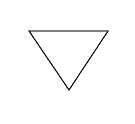
Note that REQ EPHEM CORR uses the uncertainties in target coordinates to determine the size of a possible offset maneuver. Therefore those uncertainties must be supplied accurately.
EXPAND
Allows the proposer to choose which exposures within an orbit will be expanded to take advantage of unused time at the end of the orbit (note that the exposures will be expanded to fill the orbit unless the MAXimum DURation [<time or percentage>] Special Requirement is also listed). If there is no EXPAND within the orbit, the last exposure in the orbit will be considered for expansion (up to an additional 20%) first, followed by the previous one and the one before that, etc. Exposures containing the EXPAND requirement are considered first for expansion. See the discussion of MINimum DURation [<time or percentage>] below for a list of types of exposures which cannot be expanded.
LOW-SKY
Requests that the current exposure be taken when the total background light is no more than 30% greater than the yearly minimum value of the zodiacal background for that target. To minimize Earth shine, the exposure will also be taken when the target is at least 40 degrees from the bright Earth. This limits visibility time to about 48 minutes per orbit. Efficiency and schedulability are reduced with this Special Requirement, but to a much lesser degree than with SHADOW. This Special Requirement may not be combined with SHADOW or used in a CVZ visit.
MAXimum DURation [<time or percentage>]
Allows the proposer to set limits on the expansion of exposures to take advantage of unused visibility. If the MAX DUR requirement is not given, exposures with the EXPAND requirement may be lengthened up to 120% of the specified exposure time. MAX DUR allows the proposer to increase or decrease this limit, and to apply it to exposures with EXPAND. If <time> is specified, the exposure will not be lengthened beyond <time>. If <percentage> is specified, (e.g., MAX DUR 125%), the exposure will not be lengthened beyond <percentage> of the specified exposure time. If <time or percentage> is omitted, the exposure will not be lengthened at all.
MINimum DURation [<time or percentage>]
Allows the proposer to limit shortening of exposures to allow them to fit in a visibility period. If the MIN DUR requirement is not given, exposures will not be shortened to less than 80% of the specified exposure time. MIN DUR allows the proposer to increase or decrease this limit. The exposure may be shortened until its duration is <time> but not further. If <time or percentage> is omitted, the exposure will not be shortened at all. If a percentage is used (e.g., MIN DUR 80%) the exposure will be shortened until its duration is decreased to, at most, <percentage> of the specified exposure time.
Note: the following types of exposures are never adjusted. The EXPAND, MAX DUR, and MIN DUR Special Requirements should not be specified on these.
- All ACS exposures.
- All NICMOS exposures
- Exposures using the STIS in modes other than ACCUM (see Chapter 10: "Space Telescope Imaging Spectrograph (STIS)").
- Exposures using FGS TRANS Mode (see Chapter 11: "Fine Guidance Sensors (FGS)").
- Exposures with internal or EARTH-CALIB targets.
- Exposures in a visit with a CVZ Special Requirement (see CVZ).
PHASE <number1> TO <number2>
Requests that the exposure start in the specified phase range (<number1> to <number2>) of a periodic variation. <number1> and <number2> should be between 0.0 and 1.0. The PERIOD <time> AND ZERO-PHASE <date> used in the calculation should have been already entered at the visit level. With short periods, the phase range (difference between <number1> and <number2>) should be made as wide as possible to make scheduling easier.
Please note that there is no need to repeat the PHASE Special Requirement for multiple exposures within the same Visit (unless you are attempting to specify different phases for those exposures). Instead, specify PHASE for only the first exposure in the Visit. If the phase window you specify is short, you may need to adjust PHASE for the first exposure so that the subsequent ones start before the phase window ends.
Note that Number_of_Iterations must be 1 if PHASE is specified
SEQuence <exposure-list> NON-INTerruptible
Specifies that exposures defined in the <exposure-list> be observed without gaps due to Earth occultation or SAA passages. Gaps between exposures may still be necessary to allow time for activities which are necessary to set up for the next exposure, such as pointing changes, readouts of the SI buffers, and SI reconfigurations. This requirement must be included for a series of FGS exposures which are to be executed within the same orbit. The exposure list should be a range of numbers separated by a hyphen, such as SEQ NON-INT 55-60.
Note: If this requirement is placed on one exposure (e.g., SEQ 20 NON-INT) and Number_of_Iterations > 1, the sequence of subexposures will not be split.
SHADOW
Requests that the current exposure be taken while HST is in the umbral shadow of the Earth. It is primarily useful when contamination by geocoronal emission (Lyman alpha, OI 1304Å, etc.) must be minimized. However, it does not minimize zodiacal light, which is the principal source of background at wavelengths longer than 3500Å (see the LOW-SKY Special Requirement).
Exposures using this Special Requirement are limited to about 32 minutes per orbit (including overheads). Scheduling may only be feasible for a small percentage of the year. This Special Requirement is a limited resource and should only be used when necessary; most usages of SHADOW will have been approved by the TAC during the Phase I review process. This Special Requirement may not be combined with LOW-SKY or used in a CVZ visit.
|
Space Telescope Science Institute http://www.stsci.edu Voice: (410) 338-1082 help@stsci.edu |